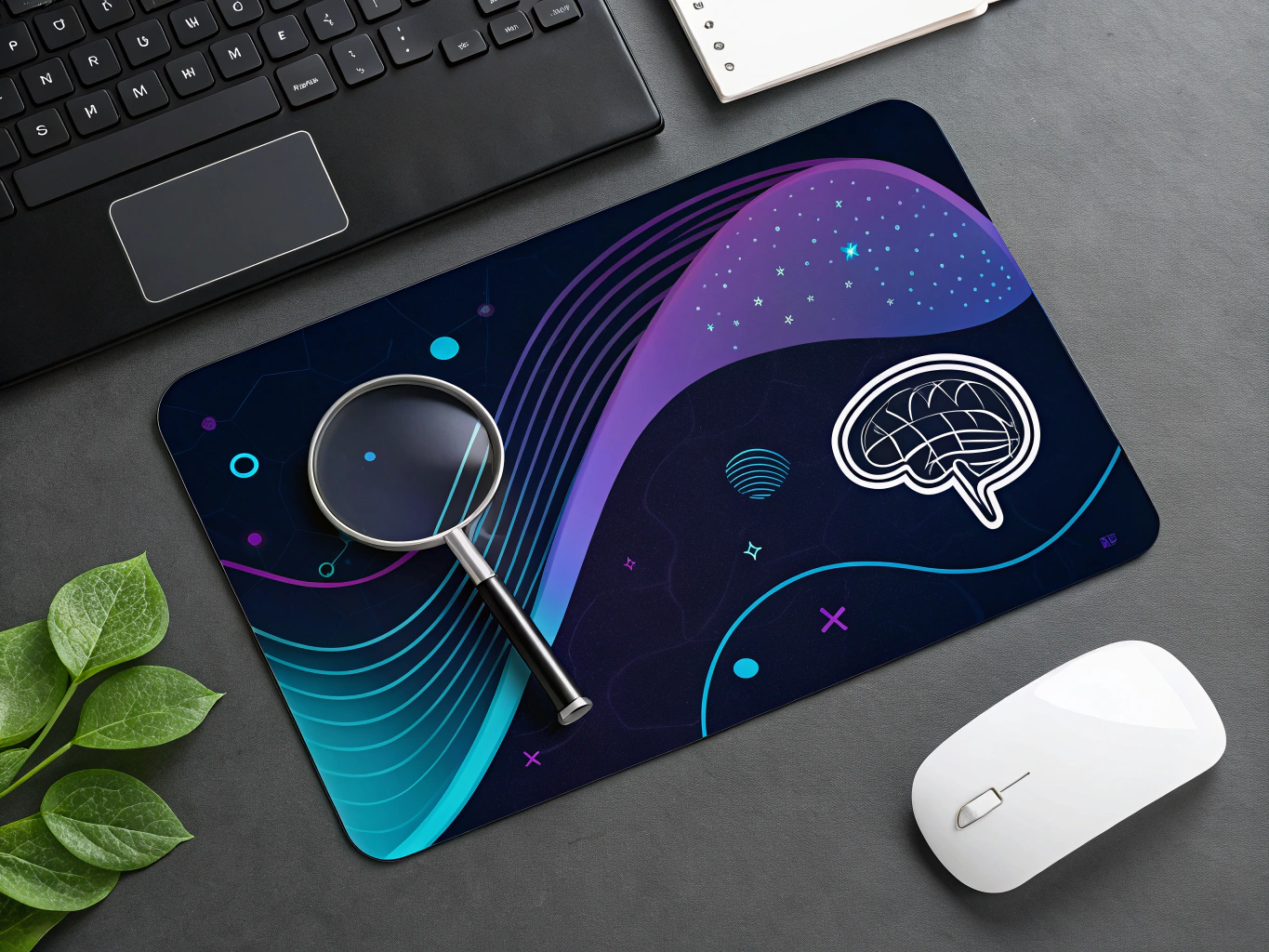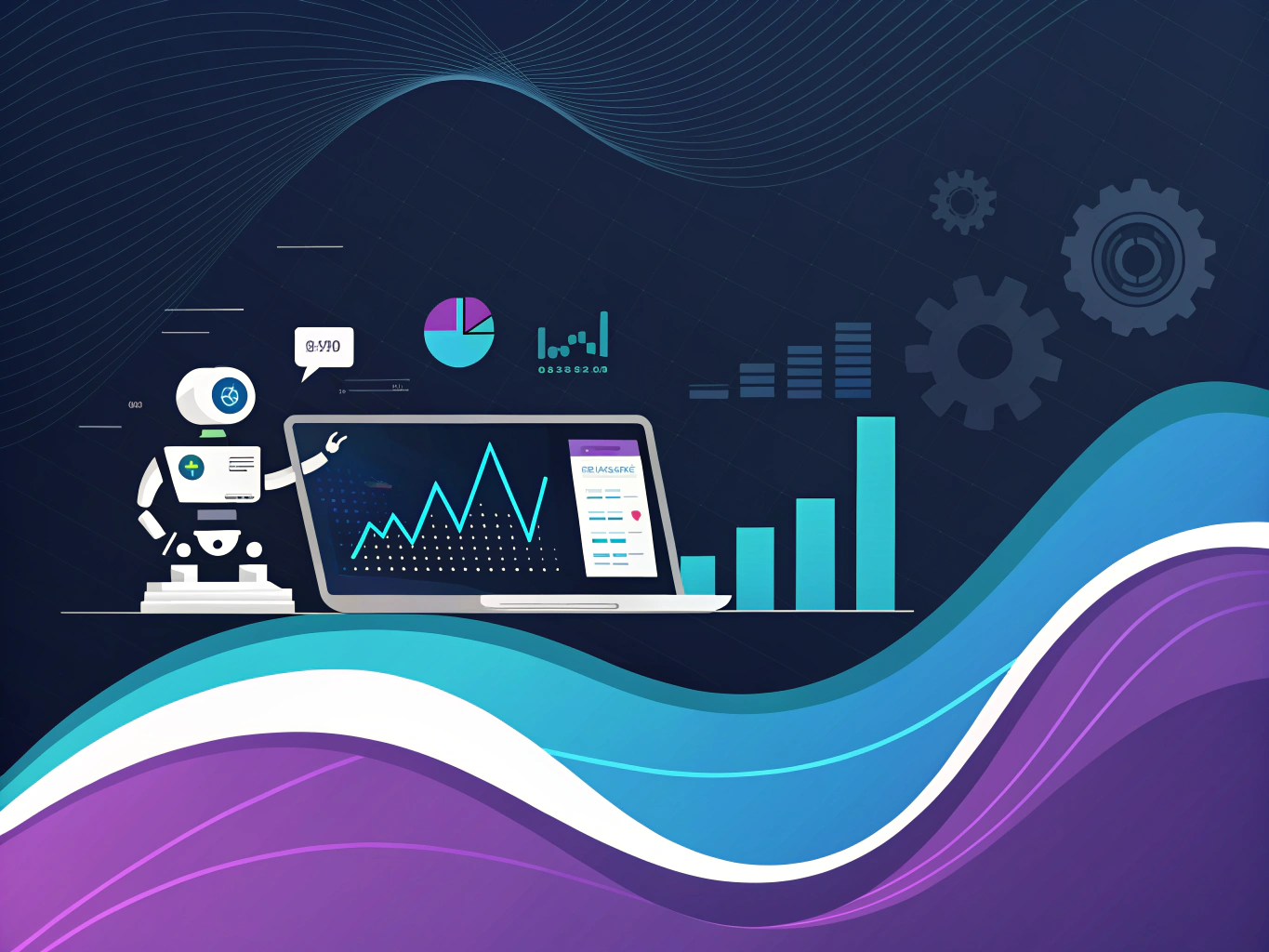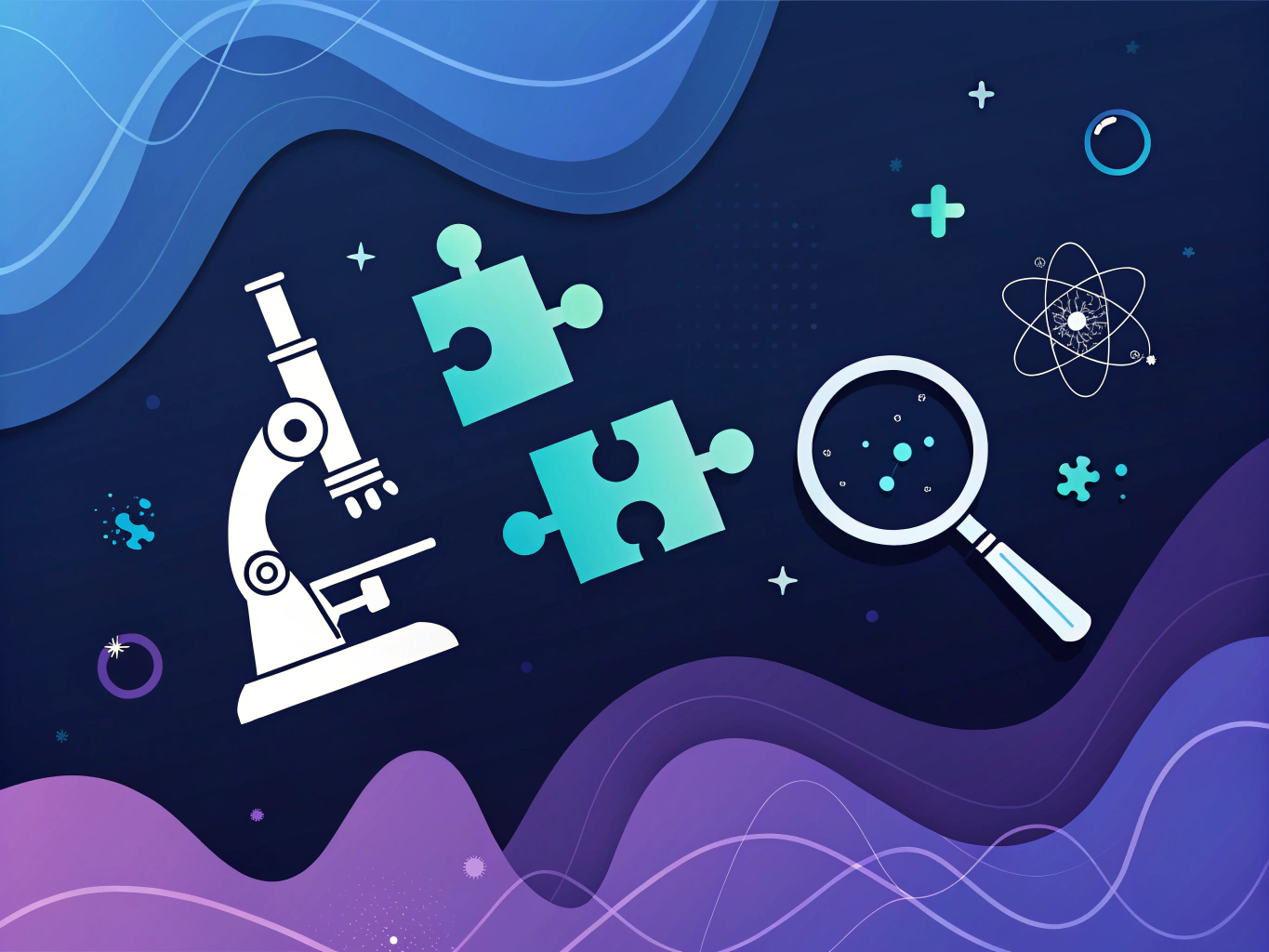The Truth About Conversion Rate Optimization Nobody’s Talking About
Let’s be honest – we’ve all been there. You’re staring at your analytics dashboard, watching your traffic numbers climb… but your sales? They’re about as exciting as watching paint dry. The gap between visitors and buyers feels like trying to cross the Grand Canyon with a pogo stick.
Here’s the thing about conversion rate optimization (CRO) that most “experts” won’t tell you: it’s not actually about optimizing conversion rates. I know, plot twist. It’s about understanding human psychology and decision-making patterns in the digital age. Think of it like being a detective in a cyber noir novel – except instead of solving crimes, you’re solving why people abandon their shopping carts.
The Psychology Behind Why People Click (Or Don’t)

Remember that time you went to buy something online, got all the way to checkout, then just… left? You’re not alone. About 70% of shoppers do exactly that. But unlike what most CRO guides will tell you, it’s not always about the button color or the number of form fields.
The real magic happens when you understand what I call the “digital decision matrix” – the split-second mental calculations your visitors make before taking action. It’s like that moment in The Matrix when Neo has to choose between the red and blue pill, except your customers are choosing between “Buy Now” and “Maybe Later.”
The Three Pillars of Modern CRO
After analyzing thousands of ecommerce sites through ProductScope AI, I’ve noticed three consistent patterns that separate high-converting stores from digital ghost towns:
- Trust Signals That Actually Matter: Not just any trust badges – but the ones that speak to your specific audience’s fears
- Friction Elimination: Making the path to purchase smoother than a freshly waxed surfboard
- Value Clarity: Explaining your worth faster than a New Yorker ordering coffee
Why Traditional Conversion Rate Optimization Fails
Here’s a truth bomb: most CRO strategies fail because they’re treating symptoms instead of causes. It’s like taking aspirin for a broken arm – sure, it might help with the pain, but it’s not fixing the underlying problem.
The digital marketing world is obsessed with quick fixes and “growth hacks.” But real conversion optimization is more like training an AI model – it requires patience, data, and constant iteration. You can’t just slap a heat map on your site and expect miracles.
The Real Metrics That Drive Ecommerce Success
Forget vanity metrics for a second. Let’s talk about what actually moves the needle in ecommerce optimization:
- Time to First Decision: How quickly can visitors understand what you’re offering?
- Trust Velocity: The speed at which you build credibility with new visitors
- Decision Friction Score: How many mental hurdles are you putting in front of your customers?
The AI-Powered Future of CRO

Here’s where things get interesting. AI isn’t just changing how we optimize websites – it’s fundamentally shifting how we understand user behavior. At ProductScope AI, we’re seeing patterns in user behavior that would be impossible to spot with traditional analytics.
Think of AI in CRO like having a million tiny shopping assistants, each watching and learning from every mouse movement, every hesitation, every abandoned cart. It’s not about replacing human insight – it’s about augmenting it with data-driven precision.
The New Rules of Conversion Optimization
The game has changed, and so have the rules. Here’s what actually works in 2023:
- Personalization at Scale: Using AI to create dynamic experiences that adapt in real-time
- Predictive Analytics: Anticipating user needs before they even know them
- Micro-Moment Optimization: Fine-tuning those split-second decisions that make or break a sale
But here’s the kicker – all this fancy tech means nothing if you’re not getting the basics right. It’s like having a Ferrari with no gas. The fundamentals of human psychology – trust, value, and ease of use – still drive every successful conversion strategy.
The Hidden Cost of Poor Optimization
Let’s talk numbers for a second. A 1% increase in conversion rate might not sound sexy, but for an ecommerce store doing $100k monthly, that’s an extra $12k per year. And that’s just the beginning. Poor optimization isn’t just losing you sales – it’s actively training your visitors to trust your competitors.
Think about it like this: every time someone leaves your site without converting, they’re not just saying “no” to this purchase – they’re building a mental model about your brand that gets harder to change with each visit.
The Psychology Behind Conversion Rate Optimization
Let’s be real – we’ve all been there. Staring at our analytics dashboard, watching that conversion rate hover at a frustratingly low percentage, wondering why visitors just won’t take that final step. It’s like having a store full of window shoppers who never reach for their wallets.
Here’s the thing about conversion rate optimization (CRO) that most “experts” miss: it’s not just about tweaking button colors or rearranging your landing page elements. That’s like trying to fix a quantum computer by hitting it with a hammer. The real magic happens when you understand the psychological triggers that make humans click “Buy Now.”
The Science of Decision-Making in E-commerce
Our brains are fascinating pieces of hardware running on some pretty buggy software. We like to think we’re rational beings, but studies show that up to 95% of our purchasing decisions happen in our subconscious mind. That’s right – while we’re busy comparing features and prices, our primitive brain is already reaching for the credit card.
Think about it like this: your website visitors are basically cave people with smartphones. They’re still operating on ancient survival instincts – fear of loss, desire for status, need for belonging. Understanding these primal motivators is like having the cheat codes to the human psyche.
The Three Pillars of Conversion Psychology
1. Trust Signals: Ever notice how you’re more likely to try a restaurant when it’s packed with people? That’s social proof in action. Your e-commerce site needs these trust markers like reviews, testimonials, and security badges. They’re not just decorative elements – they’re psychological safety nets.
2. Scarcity Triggers: “Only 2 left in stock” isn’t just inventory management – it’s FOMO weaponized. But here’s the catch: fake scarcity is like fake designer bags – people can smell it from a mile away. Keep it real, or it’ll backfire spectacularly.
3. Cognitive Ease: Your brain is basically a lazy teenager – it wants maximum reward for minimum effort. That’s why Amazon’s one-click ordering is so brilliant. The easier you make it to convert, the more likely people are to follow through.
Advanced CRO Strategies That Actually Work

I’ve seen brands throw money at fancy A/B testing tools without understanding the fundamentals. It’s like giving a Ferrari to someone who can’t drive stick. Here are some strategies that have consistently delivered results for our clients at ProductScope AI:
Personalization That Doesn’t Feel Creepy
AI-driven personalization is powerful, but there’s a fine line between helpful and stalkerish. The goal is to be like a good waiter who anticipates your needs, not that weird friend who knows too much about your Facebook activity.
We’ve seen conversion rates jump by 35% when implementing smart product recommendations that factor in browsing history, purchase patterns, and contextual relevance. The key is making it feel natural, not forced.
Mobile-First Isn’t Just a Buzzword
Here’s a stat that’ll wake you up: 79% of smartphone users have made a purchase online using their mobile device in the last 6 months. Yet I still see e-commerce sites that treat mobile optimization as an afterthought.
Mobile CRO isn’t just about making your site responsive. It’s about understanding the unique psychology of mobile users. They’re often in a different mindset – more impulsive, more distracted, more likely to abandon if things aren’t lightning-fast.
The Power of Micro-Conversions
Stop thinking about conversion as a single moment of truth. It’s more like a first date that leads to a relationship. Each small interaction – newsletter signup, wishlist addition, social share – is a micro-conversion that builds momentum toward the ultimate goal.
Testing and Optimization: Beyond the Basics
Let’s talk about A/B testing without the fluff. Yes, it’s important. No, it’s not a magic wand. The secret sauce is knowing what to test and why.
The Scientific Method for CRO
Start with a hypothesis based on data, not hunches. “I think the green button will convert better” isn’t a hypothesis. “Based on heat map analysis and user feedback, moving the CTA above the fold will increase conversions by reducing cognitive load” – now that’s a hypothesis you can test.
Remember: statistical significance is your friend. Don’t call a test until you have enough data to make it meaningful. I’ve seen too many brands make major decisions based on a handful of conversions.
Tools of the Trade
The right tools make all the difference, but they’re useless without a strategy. Here’s what’s actually working in 2023:
- Heatmapping tools for understanding user behavior patterns
- Session recording software to identify friction points
- Split testing platforms that integrate with your analytics
- Customer feedback tools for qualitative insights
But here’s the kicker: the most powerful CRO tool is still your brain. All these fancy platforms are just amplifiers for your strategic thinking.
The Future of CRO
As AI continues to evolve, we’re seeing some exciting possibilities in conversion optimization. Machine learning algorithms can now predict user behavior with uncanny accuracy, allowing for real-time personalization that feels almost prescient.
But let’s not get carried away. AI is like having a really smart intern – it can handle the heavy lifting and spot patterns we might miss, but it still needs human oversight and strategic direction.
Advanced CRO Testing Strategies That Actually Work

Look, I’ve seen countless brands get stuck in what I call the “testing trap” – running endless A/B tests without a clear strategy or meaningful results. It’s like having an AI model that’s trained on bad data – you might get outputs, but they won’t actually help you move forward.
The truth about conversion rate optimization is that it’s not just about testing button colors or headline variations (though those can matter). It’s about understanding the psychology behind why people click – or don’t click – and then using that insight to create meaningful experiments.
The Psychology of High-Converting Pages
Here’s something fascinating I’ve noticed while working with hundreds of ecommerce brands: the highest-converting pages often break “best practices.” Why? Because they understand their specific audience’s psychological triggers.
Take one of our clients at ProductScope AI – they increased their conversion rate by 47% by actually adding more text to their product pages. Conventional wisdom says “keep it short,” but their audience of tech enthusiasts wanted deep technical specs. The key was presenting it in a scannable, progressive disclosure format.
Building a Data-Driven CRO Culture
The most successful brands don’t just do CRO – they build it into their DNA. It’s like having an AI system that continuously learns and adapts, except in this case, it’s your entire organization getting smarter about conversions.
Creating Your Testing Roadmap
Start with these core elements:
– Define clear success metrics (beyond just conversion rate)
– Build a hypothesis backlog based on actual user data
– Prioritize tests using the ICE framework (Impact, Confidence, Ease)
– Document everything – especially your failures
One of the biggest mistakes I see is brands running tests without proper statistical significance. They’ll see a 5% lift over two days and call it a win. That’s about as reliable as asking an AI to predict next week’s lottery numbers.
The Future of Conversion Rate Optimization
We’re entering an era where AI and machine learning are revolutionizing how we approach CRO. But here’s the thing – AI isn’t replacing traditional CRO methods, it’s enhancing them. Think of it as having a really smart research assistant who can process massive amounts of data and spot patterns humans might miss.
AI-Powered Personalization
The future of CRO isn’t about finding a single “perfect” version of your site – it’s about creating dynamically personalized experiences at scale. At ProductScope AI, we’re seeing brands use AI to:
– Automatically adjust product descriptions based on user behavior
– Customize pricing strategies in real-time
– Generate personalized product recommendations that actually make sense
The Human Element in Modern CRO
But here’s what everyone gets wrong about AI in CRO – they think it’s going to completely automate the process. That’s like expecting an AI chatbot to replace your entire customer service team. The reality is that human insight is more important than ever.
The best CRO programs combine:
– AI-driven data analysis
– Human creativity and intuition
– Real customer feedback and qualitative research
– Strategic business understanding
Putting It All Together: Your CRO Action Plan
So what does this all mean for your brand? Here’s your concrete action plan:
1. Audit Your Current Approach
Start by honestly assessing where you are. Are you making decisions based on data or gut feel? Are your tests actually teaching you something about your customers? Document your current conversion rates across different segments and channels.
2. Build Your Testing Framework
Create a systematic approach to testing that includes:
– Clear hypothesis documentation
– Statistical significance calculations
– Control for external factors
– Regular review and analysis cycles
3. Invest in the Right Tools
You don’t need every CRO tool out there, but you do need:
– A reliable A/B testing platform
– Heat mapping and session recording capabilities
– Analytics that you actually understand how to use
– A system for collecting and analyzing customer feedback
Final Thoughts on Conversion Optimization
Remember this: conversion rate optimization isn’t about finding magic bullets or quick fixes. It’s about building a systematic approach to understanding and improving how users interact with your brand.
The brands that win at CRO in 2023 and beyond will be those that combine data-driven decision making with genuine customer empathy. They’ll use AI and automation where it makes sense, but never lose sight of the human element.
And most importantly, they’ll understand that CRO isn’t a destination – it’s a journey of continuous improvement. Just like AI models that get better with more training data, your CRO program should be constantly learning and evolving.
Now get out there and start testing – but test smart, not just more.
👉👉 Create Photos, Videos & Optimized Content in minutes 👈👈
Related Articles:
- Conversion Rate Optimization: 7 Ecommerce Tactics That Work
- Conversion Rate Optimization Services: A 7-Step Framework
- Conversion Rate Optimization Services: A 7-Step Framework
Frequently Asked Questions
How do you optimize conversion rates?
Optimizing conversion rates involves analyzing user behavior through tools like heatmaps and A/B testing to understand how visitors interact with your site. By making data-driven changes to elements such as headlines, calls-to-action, and landing page design, you can improve user engagement and encourage more conversions. Continuously testing and refining these elements based on user feedback and performance metrics ensures ongoing improvement.
What are the 6 primary elements of conversion rate optimization?
The 6 primary elements of conversion rate optimization include: 1) User Experience (UX) design, ensuring a seamless and intuitive navigation; 2) Persuasive copywriting, creating compelling and clear messaging; 3) A/B testing, experimenting with different variations to find the most effective one; 4) Call-to-action (CTA) optimization, designing CTAs that stand out and drive action; 5) Trust signals, such as testimonials and security badges to build credibility; 6) Mobile optimization, ensuring the site performs well on all devices.
What are CRO tactics?
CRO tactics are specific strategies used to improve the conversion rate of a website. These can include testing different headlines, altering the layout of a page, optimizing forms to reduce friction, personalizing user experiences based on behavior, and implementing retargeting campaigns to re-engage potential customers. By using analytics and user feedback, businesses can identify bottlenecks and opportunities for conversion improvements.
How to become a conversion rate optimizer?
To become a conversion rate optimizer, one should start by gaining a solid understanding of digital marketing principles and analytics tools such as Google Analytics. Building skills in UX/UI design, copywriting, and data analysis is crucial, along with staying updated with the latest CRO trends and techniques. Practical experience through internships or projects, combined with certifications from platforms like CXL Institute, can also enhance your expertise and credibility in the field.
How can I improve my conversion rate?
Improving your conversion rate begins with understanding your audience and their journey on your website. Implementing A/B testing to refine elements like headlines, images, and CTAs can lead to better engagement. Additionally, enhancing page load speeds, offering personalized experiences, and ensuring a mobile-friendly design can significantly boost your conversion rates by making it easier and more appealing for visitors to take action.
About the Author
Vijay Jacob is the founder and chief contributing writer for ProductScope AI focused on storytelling in AI and tech. You can follow him on X and LinkedIn, and ProductScope AI on X and on LinkedIn.
We’re also building a powerful AI Studio for Brands & Creators to sell smarter and faster with AI. With PS Studio you can generate AI Images, AI Videos, Blog Post Generator and Automate repeat writing with AI Agents that can produce content in your voice and tone all in one place. If you sell on Amazon you can even optimize your Amazon Product Listings or get unique customer insights with PS Optimize.
🎁 Limited time Bonus: I put together an exclusive welcome gift called the “Formula,” which includes all of my free checklists (from SEO to Image Design to content creation at scale), including the top AI agents, and ways to scale your brand & content strategy today. Sign up free to get 200 PS Studio credits on us, and as a bonus, you will receive the “formula” via email as a thank you for your time.

